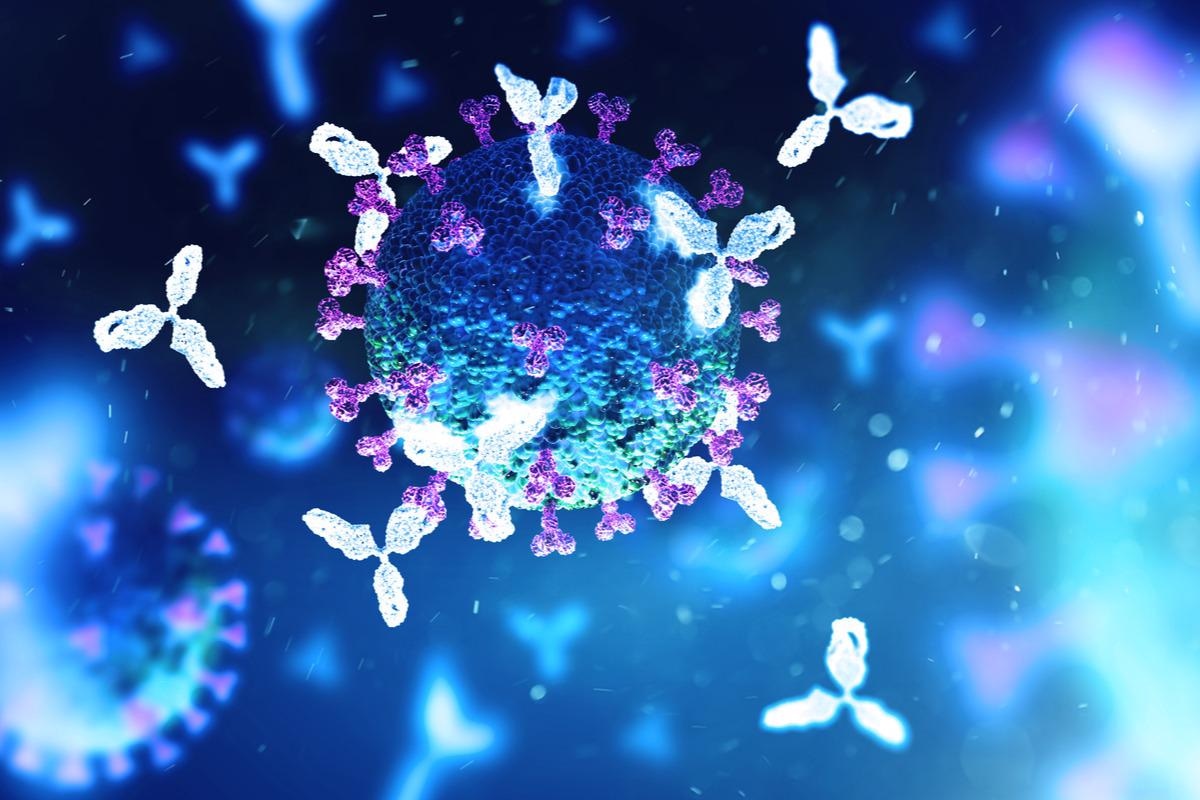In a recent study published in Science, researchers evaluated the ability of receptor-binding domain (RBD) antibodies to bind to and neutralize severe acute respiratory syndrome coronavirus-2 (SARS-CoV-2) Omicron (B.1.1.529) variant.

Study: Structural basis for potent antibody neutralization of SARS-CoV-2 variants including B.1.1.529. Image Credit: Andrii Vodolazhskyi/Shutterstock
Background
To date, the coronavirus disease 2019 (COVID-19) pandemic has caused more than 480 million infections worldwide, with over 6.12 million related deaths. The emergence of the recent Omicron variant has been alarming. Although the broadly neutralizing antibodies are likely to be unaffected by Omicron mutations, it is essential to note that they neutralize in the µg/ml range; in contrast, therapeutic antibodies work in the range of 1 – 50 ng/ml.
The study and findings
In the present study, researchers assessed the neutralizing activity of a panel of antibodies against the Omicron variant. The structures of two proline-stabilized spike (S2P) of the Omicron variant were evaluated at 3.29 Å resolution. Consistent with other variants containing the D614G substitution, the single-RBD-up conformation was the most prevalent conformation of the Omicron spike. This RBD conformation was stabilized by the interactions mediated by the amino acid (AA) substitutions S371L, S373P, and S375F.
The AA changes were denser in the RBD and N-terminal domains (NTD), targeted by most neutralizing antibodies (nAbs). Half the AA changes outside RBD and NTD formed new hydrophobic or electrostatic interactions. Nevertheless, the folding energy of the Omicron spike was similar to that of the SARS-CoV-2 Wuhan-Hu-1 (WA-1) strain. Several AA changes were basic substitutions increasing the electropositivity of RBD. Overall, the AA changes in the RBD affected the sites involved in binding with angiotensin-converting enzyme-2 (ACE2) and recognition sites of potent nAbs.
Binding of soluble human ACE2 to spike proteins of Alpha (B.1.1.7), Beta (B.1.351), Gamma (P.1), Delta (B.1.617.2), and Omicron variants was evaluated relative to the ancestral spike harboring the D614G substitution. ACE2 binding to the Alpha spike was 182% of the D614G spike. AA changes in other variants did not substantially increase ACE2 binding affinity. Besides, the binding affinity was assessed using surface plasmon resonance between ACE2 and spike proteins of WA-1, D614G, and five variants of concern (Alpha, Beta, Gamma, Delta, and Omicron variants).
The WA-1 and D614G variants showed similar apparent affinities, given that they have identical RBD sequences. As with other variants, the differences in binding affinity were minimal, indicating that immune pressure rather than the optimization of ACE2 binding might drive the evolution of variant spike proteins.
The impact of spike mutations on the binding and neutralization by monoclonal antibodies (mAbs) was investigated. Seventeen highly potent mAbs were expressed and purified; all mAbs bound to and neutralized the Alpha spike comparable to the D614G spike. Two mAbs from classes I (CB6 & REGN10933) and II (LY-CoV555 & C144) exhibited substantial loss of binding and neutralization against the Beta and Gamma variants. Binding and neutralization to the Delta variant were minimally decreased for all mAbs, except REGN10987, LY-CoV555, and A19-46.1. Except for three (COV2-2130, A19-46.1, and LY-CoV1404), mAbs demonstrated binding < 32% of D614G. Overall, the team observed that mutations in the Omicron spike confer resistance to a wide range of mAbs.
Virus particles with single AA substitutions of Omicron’s RBD were synthesized to evaluate the functional basis of antibody escape. For class I antibodies (CB6, B1-182.1, and S2E12), the K417N substitution abrogated neutralization of CB6, and Y505H, S371L, or Q493R substitutions induced a several-fold reduction in neutralization. B1-182.1 and S2E12 antibodies exhibited potent neutralizing activity against all virus particles.
Among the class II antibodies LY-CoV555 and A19-46.1, Q493R or E484A substitutions completely diminished neutralization of LY-CoV555 while A19-46.1 was unaffected by AA changes. It was determined that the epitope location and angle of approach allowed effective neutralization of Omicron by A19-46.1.
Among the class III antibodies A19-61.1, S309, COV2-2130, and LY-COV1404, the activity of A19-61.1 was completely lost by the presence of the G446S substitution. For COV2-2130, single AA changes in RBD did not cause any significant differences in neutralizing activity, suggesting that several AA changes acting in concert reduced neutralization potency against the Omicron variant.
Cocktails of B1-182.1, A19-46.1, A19-61.1, LY-CoV1404, ADG2, and S309 antibodies were tested to determine synergistic neutralization. Three of the ten combinations, i.e., COV2-2196/COV2-2130, B1-182.1/A19-46.1, and B1-182.1/S309, neutralized Omicron with a 5 – 115-fold increase compared to their component antibodies. The authors proposed a working mechanism of the B-182.1/A19-46.1 cocktail, wherein the binding of the B1-182.1 antibody to the spike induced a conformational change into the ‘up state’ of RBD, facilitating the binding of A19-46.1, which preferentially binds in the RBD-up-conformation.
Conclusions
The researchers observed that AA substitutions did not result in meaningful changes in the binding affinity, indicating that no more fitness could be gained by increasing the affinity. S309 and COV2-2196 antibodies exhibited similar neutralizing potency, while LY-CoV1404 retained its potency against SARS-CoV-2 Omicron without any activity loss. Moreover, many antibodies neutralized the BA.2 form of the Omicron variant, and using antibody cocktails improved Omicron neutralization. All the tested cocktails except B1-182.1/S309 exhibited synergistic neutralizing activity against BA.2 sub-variant, and overall, the findings support the notion of using antibody combinations.